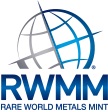Rhenium, one of the rarest and most valuable metals, is transforming the landscape of modern medicine. Known for its exceptional resistance to heat and corrosion, this high-performance metal is driving innovation in cancer treatment, medical imaging, and high-precision surgical instruments. As medical technology advances, the metal rhenium is proving to be a game-changer in both diagnostics and treatment, making it an essential material for the future of healthcare.
Why is Rhenium So Important for Medical Advancements?
Rhenium’s unique chemical and physical properties make it indispensable in high-tech applications, particularly in medicine. Some of its key advantages include:
● Unmatched Heat Resistance – With the third-highest melting point of all elements (3,180°C), rhenium is ideal for high-temperature medical equipment.
● Exceptional Durability – Resistant to corrosion, ensuring longevity and reliability in medical devices.
● Precision in Radiation Therapy – Rhenium isotopes are crucial for targeted cancer treatments.
● Superior Conductivity – Essential for medical imaging and high-precision diagnostic tools.
These properties make rhenium a vital component in cutting-edge medical technologies, ensuring safer, more effective treatments and diagnostics.

Rhenium and Cancer Treatment: A Revolutionary Approach
Cancer therapy has seen a major transformation with rhenium-based radiopharmaceuticals. One of the most notable breakthroughs is the use of Rhenium-186 and Rhenium-188 isotopes in targeted radiation therapy.
Why is Rhenium Ideal for Cancer Treatment?
● Selective Targeting: Rhenium-based radiopharmaceuticals precisely target cancer cells, minimizing damage to healthy tissue.
● High Efficacy in Tumor Reduction: Rhenium’s radiation properties enhance treatment effectiveness, particularly in bone and liver cancers.
● Non-Invasive Treatment Options: Some rhenium compounds are used in emerging therapies that reduce the need for aggressive surgery.
With cancer cases on the rise, buy metal rhenium and be part of the future of oncology innovations.
The Role of Rhenium in Advanced Medical Imaging
Medical imaging technology depends on high-performance metals for precision and durability. Rhenium’s exceptional properties make it an essential material in diagnostic tools such as:
● X-Ray and CT Scanners: Rhenium alloys improve image resolution and ensure machine longevity.
● Endoscopic Equipment: Used in high-precision instruments for non-invasive procedures.
● Nuclear Medicine: Rhenium isotopes enhance imaging for detecting tumors and other medical conditions.
As healthcare moves towards personalized medicine and AI-driven diagnostics, rhenium’s role in medical imaging will only expand, making it an invaluable asset for both technology and investment.
How Rhenium is Reshaping the Future of Healthcare
The demand for rare and high-performance metals in medicine is skyrocketing. From precision surgical tools to futuristic treatment methods, rhenium is set to redefine modern healthcare. Here’s what the future holds:
● Next-Gen Biomedical Devices: Ultra-durable and heat-resistant medical instruments.
● Breakthrough Therapies: Advanced drug delivery systems using rhenium isotopes.
● AI-Powered Diagnostics: Enhanced imaging tools for early disease detection.
The integration of rhenium-based technologies in medicine is not just a trend—it’s the future.
Final Verdict:
Innovation waits for no one. Medical technology is evolving, and rhenium is at its core—driving advancements in cancer treatment, diagnostics, and precision surgery. Whether you’re an investor, a collector, or someone who believes in the power of science, Rare World Metals Mint offers you the chance to own a piece of the future. We provide high-purity rhenium ingots, giving you access to a metal that is shaping the next generation of medical breakthroughs.
Buy metal rhenium today and hold an asset that’s not just rare, but revolutionary.
Don’t just watch the future unfold—own a piece of it.
FAQs
What is rhenium used for?
Rhenium is mainly used as an alloying element in tungsten and molybdenum, and as a catalyst in various chemical processes, especially in the production of high-octane, lead-free gasoline.
Is rhenium toxic to humans?
The toxicity of rhenium itself is not well-studied, but certain rhenium compounds, like rhenium hexafluoride, are known to irritate the skin and eyes, and inhaling rhenium dust can cause lung damage, such as pulmonary fibrosis, in animal studies.
Is rhenium a rare metal?
Yes, rhenium (Re) is classified as a rare metal, with an average occurrence of less than one part per billion in the Earth's crust.
Why is rhenium so expensive?
Rhenium is costly due to its rarity, being one of the least abundant naturally occurring elements, and because extracting it is difficult and expensive, often coming as a byproduct of copper and molybdenum mining.
What are the disadvantages of rhenium?
Despite its value, rhenium has several drawbacks, including its scarcity and high price, limited solubility in tungsten, and its tendency to oxidize at high temperatures.






